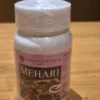Kumari
|
Botanical Name |
Aloe Vera |
|
Family |
Liliaceae |
|
Sanskrit |
Grihkanya, Ghritkumarika, Kumari |
|
English |
Indian Aloe |
|
Hindi |
Ghritkumari, Gwarpatha |
|
Kannada |
Kumari |
|
Malayalam |
Kumari |
|
Telugu |
Kalabanda, Kumari |
|
Tamil |
Kumari |
|
Marathi |
Kumari |
Distribution
It is cultivated in almost all parts of india, in all climatic conditions and widely available
|
Parts Used |
Leaf Pulp |
|
Dose |
Leaf Pulp Juice 10 To 20 Ml (Purified), Churna 0.5 Grams |
Chemical Constituents
- Hydroxyantthraquinone – barbaloin (a mixture of aloin, a and, b)
- Diastereoisomeric 10-c glucoside.
- Oleoresin.
- Aglycone aloesone.
Ayurvedic Properties
|
Quality (Guna) |
Guru(Heavy), Snigha (Slimy), Pichila (Soft) |
|
Taste (Rasa) |
Tikta |
|
Metabolism (Vipaka) |
Katu |
|
Potency (Virya) |
Sita |
|
Impact (Prabhava) |
Pitta Virechana |
Pharmacological Action
- Kumari is having anti-inflammatory property that helps to reduce inflammation when used in different modes and different combinations.
- Antiulcergenic properties of kumari is helpful in treating ulcers like peptic ulcers.
- Hepatoprotective properties of kumari helps in maintaining proper metabolism.
- Hypotensive property of kumari helps in treating blood pressure.
- Antispasmodic property of kumari helps in managing cramps like colic cramps and abdominal cramps or even menstrual cramps.
Therapeutic Uses
It is used in various diseases like:
- Uti or urinary tract infections.
- Micturative.
- Blood purifier.
- Abdominal disorders.
- Antipyertic.
- Skin diseases.
Some of the common formulations
- Kumaryasava.
- Abhraka bhasma.
- Akika pisti.
- Chandrakala rasa.
- Mkar dhvaj.
- Manjishtadi taila.
- Akika pisti.




